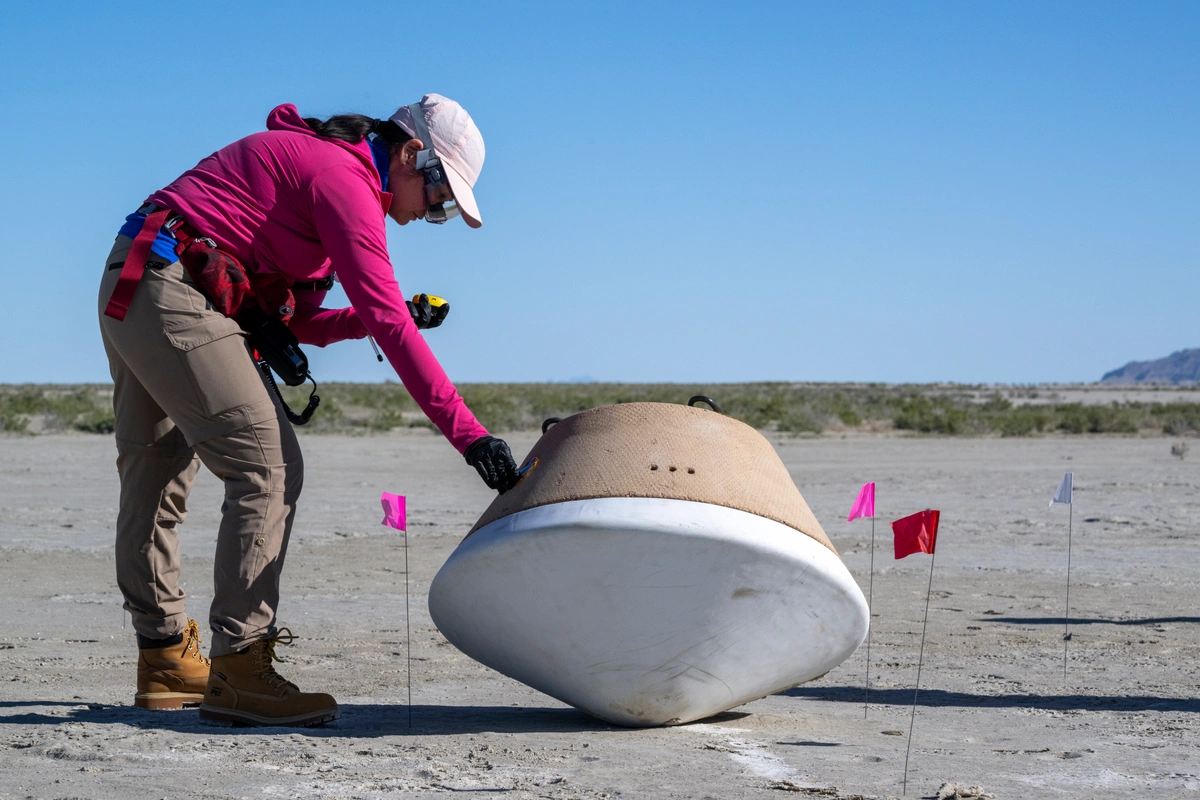
MyRadar
News
—
NASA's Osiris Rex Capsule Safely Lands with Asteroid Treasure
by MyRadar News Team
9/27/2023
After a seven-year journey covering billions of miles, NASA's Osiris Rex spacecraft completed its mission by delivering a tiny capsule filled with asteroid Bennu's precious cargo to Earth. The capsule, hurtling through Earth's atmosphere at a staggering speed of 27,000 miles per hour, gently touched down at a military base in Utah's desert, marking the triumphant end of a historic voyage.
The mission reached a major milestone when confirmation came in: "TGL milestone. We have confirmed parachute deployment."
Minutes later, the capsule, suspended beneath a parachute, safely landed on the Utah military base.
The Osiris Rex sample return capsule, which traveled a billion miles to collect material from Bennu, had completed its remarkable journey.
Inside the capsule rests a canister containing a few ounces of pristine asteroid dirt, rocks, and dust, believed to be older than Earth itself, dating back to the early stages of our solar system's formation. Principal Investigator Dante Lauretta emphasized the mission's primary objective: to investigate whether carbon-rich asteroids like Bennu delivered compounds that played a role in the origin of life on Earth.
“The key objective for me and one of the driving objectives of this program is to try to understand do carbon rich asteroids like Bennu deliver the compounds that may have led to the origin of life on our planet; the origin of Earth as a habitable planet," Lauretta said.
After a thorough check of the landing area for potential hazardous materials, the capsule was swiftly transported to a clean room at the base. The sterile environment is essential to prevent Earth's biology from contaminating the precious sample. However, scientists have little concern about the possibility of alien life contamination, as material from this asteroid has likely reached Earth in the past, and the asteroid's harsh environment makes it an inhospitable habitat for life as we know it.
From the Utah base, the canister containing asteroid material was flown to NASA's Johnson Space Center near Houston. There, approximately 70% of the sample will be preserved for extensive analysis, expected to span decades. The remaining portion will be distributed to researchers and institutions worldwide for further study.
But the Osiris Rex spacecraft didn't meet its end in Earth's atmosphere. It has been rebranded as Osiris Apex and repurposed for a new mission.
Under this new name, it is slated to rendezvous with another asteroid by the end of the decade. Dani DellaGuistina, who served as the lead imaging scientist for the Osiris Rex mission, now leads the Apex mission. The spacecraft's destination is asteroid Apophis, infamous for its close approach to Earth.
"Asteroid Apophis is a pretty infamous object because when it was discovered in 2004, there was an initial scare that it might impact the Earth in 2029. It’s a very close approaching asteroid," DellaGiustina said.
In 2029, Apophis will pass within 20,000 miles of our planet, visible to the naked eye. Scientists hope to observe how Earth's gravitational forces affect Apophis, gathering valuable data that can serve as a baseline for understanding other potentially hazardous near-Earth asteroids.
The Osiris Rex mission began in 2016 with its launch from the Kennedy Space Center and is now set to conclude its second mission, Osiris Apex, in 2029.
NASA continues to explore new possibilities for this remarkable spacecraft, leaving the door open for future adventures beyond its extraordinary journey.

